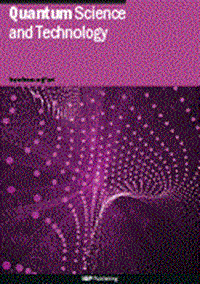Typical machine learning datasets as low-depth quantum circuits
IF 5
2区 物理与天体物理
Q1 PHYSICS, MULTIDISCIPLINARY
引用次数: 0
Abstract
Quantum machine learning (QML) is an emerging field that investigates the capabilities of quantum computers for learning tasks. While QML models can theoretically offer advantages such as exponential speed-ups, challenges in data loading and the ability to scale to relevant problem sizes have prevented demonstrations of such advantages on practical problems. In particular, the encoding of arbitrary classical data into quantum states usually comes at a high computational cost, either in terms of qubits or gate count. However, real-world data typically exhibits some inherent structure (such as image data) which can be leveraged to load them with a much smaller cost on a quantum computer. This work further develops an efficient algorithm for finding low-depth quantum circuits to load classical image data as quantum states. To evaluate its effectiveness, we conduct systematic studies on the MNIST, Fashion-MNIST, CIFAR-10, and Imagenette datasets. The corresponding circuits for loading the full large-scale datasets are available publicly as PennyLane datasets and can be used by the community for their own benchmarks. We further analyze the performance of various quantum classifiers, such as quantum kernel methods, parameterized quantum circuits, and tensor-network classifiers, and we compare them to convolutional neural networks. In particular, we focus on the performance of the quantum classifiers as we introduce nonlinear functions of the input state, e.g. by letting the circuit parameters depend on the input state.典型的机器学习数据集是低深度量子电路
量子机器学习(QML)是一个新兴领域,研究量子计算机在学习任务中的能力。虽然QML模型理论上可以提供指数级加速等优势,但数据加载方面的挑战和扩展到相关问题规模的能力阻碍了在实际问题上展示这些优势。特别是,将任意经典数据编码为量子态通常需要很高的计算成本,无论是在量子位还是门计数方面。然而,现实世界的数据通常表现出一些固有的结构(如图像数据),可以利用这些结构在量子计算机上以更小的成本加载它们。这项工作进一步发展了一种有效的算法,用于寻找低深度量子电路来加载经典图像数据作为量子态。为了评估其有效性,我们对MNIST、Fashion-MNIST、CIFAR-10和Imagenette数据集进行了系统的研究。用于加载完整大规模数据集的相应电路作为PennyLane数据集公开提供,社区可以将其用于自己的基准测试。我们进一步分析了各种量子分类器的性能,如量子核方法、参数化量子电路和张量网络分类器,并将它们与卷积神经网络进行了比较。特别是,当我们引入输入状态的非线性函数时,我们关注量子分类器的性能,例如,通过让电路参数依赖于输入状态。
本文章由计算机程序翻译,如有差异,请以英文原文为准。
求助全文
约1分钟内获得全文
求助全文
来源期刊

Quantum Science and Technology
Materials Science-Materials Science (miscellaneous)
CiteScore
11.20
自引率
3.00%
发文量
133
期刊介绍:
Driven by advances in technology and experimental capability, the last decade has seen the emergence of quantum technology: a new praxis for controlling the quantum world. It is now possible to engineer complex, multi-component systems that merge the once distinct fields of quantum optics and condensed matter physics.
Quantum Science and Technology is a new multidisciplinary, electronic-only journal, devoted to publishing research of the highest quality and impact covering theoretical and experimental advances in the fundamental science and application of all quantum-enabled technologies.
 求助内容:
求助内容: 应助结果提醒方式:
应助结果提醒方式:


